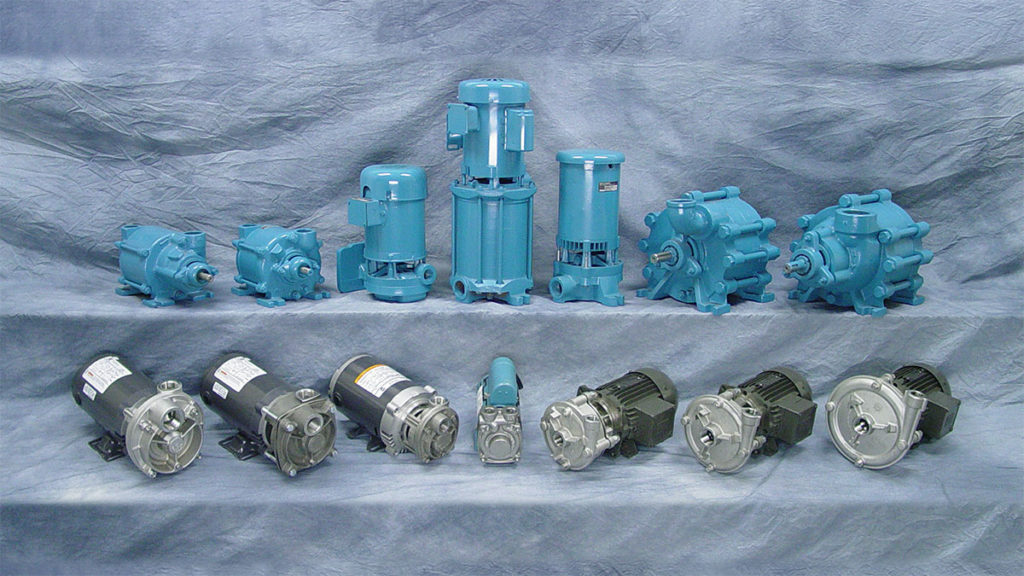Welcome to Week 6 of our series exploring the unique advantages of regenerative turbine pumps. This week, we’ll focus on a critical technical concept: Net Positive Suction Head (NPSH), and why regenerative turbine pumps excel in handling NPSH-sensitive applications.

The NPSH of Water as Temperatures Rise
Understanding NPSH: Key to Preventing Cavitation
NPSH is a crucial factor in ensuring efficient pump operation, particularly in preventing cavitation—a damaging phenomenon where vapor bubbles form and collapse within the pump, potentially harming the impeller and other components. To understand NPSH in depth, let’s break it down into its two main types:
- NPSH Available (NPSHA): This is the absolute pressure head available at the pump suction minus the vapor pressure of the fluid. It indicates how close the fluid is to vaporizing. When NPSHA is low, the risk of cavitation increases.
- NPSH Required (NPSHR): This is the minimum suction pressure head required by the pump to avoid cavitation. Each pump design has its own NPSHR, which varies based on factors like the pump’s speed, size, and application.
Cavitation is particularly concerning in centrifugal pumps, as it can lead to severe performance issues, increased maintenance, and, if left unchecked, significant damage to the pump components. For this reason, understanding the NPSH values and ensuring they are balanced for the specific system is essential.
Regenerative Turbine Pumps: Optimized for Low NPSH Applications
One of the distinct advantages of MTH Pumps’ regenerative turbine pumps is their ability to maintain efficient operation even in low NPSH conditions. Whether close-coupled or flex-coupled, these pumps are designed to minimize cavitation and deliver reliable performance in challenging applications.

As NPSHa becomes less, the pump performance decreases.
Close-Coupled Pumps (T31, T41, T51 Series): MTH’s close-coupled regenerative turbine pumps are designed to maintain low NPSH requirements during standard operating conditions. These models are engineered with:
- Small Diameter Impellers: The compact size of the impellers minimizes the risk of cavitation by reducing the amount of suction head required to move the fluid through the pump.
- Tight Fluid Cavities: The tight spacing in the fluid passages helps to push vapor out before it can build up and cause cavitation damage.
Even when operating at high temperatures—where cavitation risks are typically higher—these close-coupled models continue to perform effectively. While cavitation may temporarily reduce the pump’s efficiency, it won’t stop operation, and performance will return to normal once fluid temperatures cool down.

The use of an Inducer Impeller, dramatically drops the NPSH Required.
Flex-Coupled Pumps: For larger flex-coupled pumps, MTH has developed proprietary inlet designs and pumping techniques that further reduce NPSH requirements, making them highly effective for handling hot fluids nearing their boiling points.
- Handling Near-Boiling Fluids: At temperatures close to 212°F (100°C), fluids are much more prone to vaporization, which increases the risk of cavitation. However, MTH’s regenerative turbine pumps are engineered to manage this efficiently, even with minimal suction head available.
- Proprietary Inlet Techniques: The innovative inlet design helps in drawing fluid into the pump without vaporizing it, minimizing the risk of vapor lock.
- Resistance to Cavitation Erosion: Even if cavitation does occur, regenerative turbine pumps are known for their ability to handle vapor mixtures effectively. In some cases, MTH pumps can manage fluid with vapor contents exceeding 20%, allowing for continued operation during cavitation-prone conditions.
Exceptional Low NPSH Capabilities
MTH Pumps offers models that excel in applications requiring extremely low NPSH values. Here are a few key performance highlights:
- Standard Flex-Coupled Products: Many of MTH’s flex-coupled models are capable of operating with as little as 4 feet of NPSHA.
- Advanced Low-NPSH Models: For applications that demand even lower NPSH, models such as the 250/260/270 Series are engineered to operate with just 2 feet of NPSHA. The 240 and 280 Series can handle conditions with NPSHA as low as 1 foot, making them ideal for handling near-boiling fluids with minimal cavitation risk.
This versatility makes MTH’s regenerative turbine pumps suitable for a wide range of industrial applications, particularly those involving hot liquids or systems with limited available suction head.
Applications Benefiting from Good NPSH Characteristics
Industries that deal with high-temperature fluids, fluctuating system pressures, and minimal suction head availability benefit greatly from regenerative turbine pumps’ excellent NPSH capabilities. A few key sectors include:
- Steam Systems and Boilers: In steam systems, hot condensate can cause issues with cavitation, especially at elevated temperatures. Regenerative turbine pumps handle this fluid efficiently without vapor lock, ensuring consistent performance in boiler feed applications.
- Power Generation: In power plants, where heat recovery and cooling systems often operate with high-temperature fluids, the ability to function effectively with low NPSH is critical to maintaining system efficiency.
- Oil and Gas: In refineries and chemical processing plants, pumps often need to handle high-temperature liquids under low-suction conditions. Regenerative turbine pumps provide a solution that mitigates cavitation and ensures reliable operation.
Thank you for joining us for Week 6 of our series. Be sure to tune in next week as we explore the minimal cavitation effects of regenerative turbine pumps, and why they are particularly well-suited for challenging applications.

